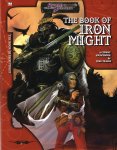Man, we knew we were going up against a beholder so we studied what its eyestalks do according to historical accounts. We put on death ward, a spell to protect against being charmed, spell immunity against flesh to stone, freedom of movement to prevent being held, and we've got healing magic to handle most of the rest. But dang, that telekinesis ray is going to fling us to our deaths. Our first priority should be taking it out.
Archer, when you figure out which eyestalk uses telekinesis, hit it with as many arrows as possible. See if we can mangle it enough so it can't aim.
So, should that be possible, in D&D Next, or in Pathfinder, or other RPGs? Maybe not just eyestalks, but how about knee-capping a giant so he can't move as fast, or chopping off the snake tail of a chimera? How should it work, mechanically?
Not in the "basic" rules. I don't mean not in the core rules or in the Player's Handbook, though. What I mean is such rules are more complex, and it's probably not a good idea to have a character be able to use that ability if it's not their "cup of tea".
For instance, I would be happy if there was a feat that gave you a bonus to hit against anyone wearing heavy armor while using a mace, hammer or axe-like weapon. "Realistic", but more to the point, since it's a feat, not every hammer-wielder would have it. It's also making the game a bit more complicated. If you're not interested, don't take it.
Same with crippling the giant. Some characters won't know how to do that, because they're too honorable, never practiced fighting that way, or whatever the reason. (If this were 3e or 5e, I'd recommend a feat to allow this kind of street fighting. There's at-will powers and stances that let fighters do this in 4e, plus some rogue encounter powers.)
Chopping off a chimera's tail, cutting off a beholder's eye stalk, or shooting an ogre in the eyes to cause permanent blindness is something that, IMO, shouldn't be allowed. Called shot rules have so many problems. Winning a battle by lopping off parts is boring unless the monster is specifically designed for that (among other things, this means the threat level goes down during the fight, reducing the tension in a bad way).
The ogre example came from one of my own characters back in 2e. I was playing a 13th-level ranger who basically couldn't miss. The DM let me make called shots, so I was shooting ogres in each eye, and yet it had no effect. They just took their damage and continued to attack (if they were still alive, that is). DMs who allow these rules tend to regret them.

